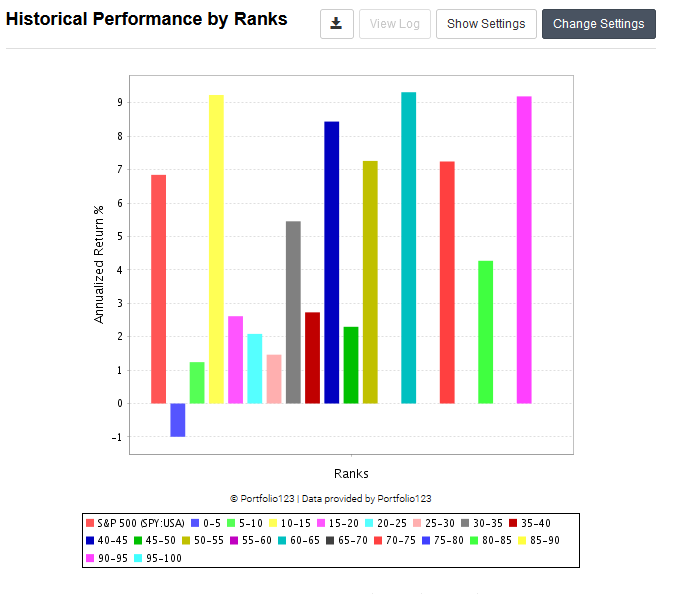All,
I will give you folks a chance to have a laugh at my stupidity, but P123 is doing something that I don’t understand. Today, I decided to try to duplicate the results that Meb Faber presented in his paper titled “Relative Strength Strategies for Investing” published April 2010 (see https://ssrn.com/abstract=1585517). In the paper, he showed how sorting the different sectors of the market by relative strength using periods of 1, 2, 3, 6, 9, and 12 months and choosing the top 1, 2, or 3 sectors resulted in higher CAGR, lower volatility, and lower drawdowns. I decided to attempt to replicate those results and to see how different strategies would have performed since April 2010.
First, I created an ETF universe with the ETFS for the 11 different sectors (not knowing that one already existed. Then I created an ranking system (“Cary_Sector_Relative_Performance”) with the different relative ranking periods and chose 1 of them to see how it performed. Imagine my surprise when (forgetting to change the number bins from 20 to 11) I ran the performance screen and found 15 different ranking buckets instead of 11 (see below)
What am I misunderstanding?
Cary
Do those 11 different ETFs exist back to 99 (assuming that’s when you started the test). Because if not, then the rank of each ETF will change. With 11 etfs the rank is 90.91, 81.82, 73.73 and so on down to 0. But in 1999 if there were only 9 ETFs available out of the 11, then you have ranks of 88.89 and 77.78, 66.67 and so forth. So if you have 20 rank buckets, it will try to put the holding in the rank bucket it is closest to numerically. And that changes based on the number of available holdings in the universe. Not a big deal if you have 50 or 100 ETFs all the time. But if you are ranking so few, it makes a big deal. That’s what I think anyway.
Hi, Mr @hemmerling, sir!
I decided to check out your idea, but instead of testing the performance of my Universe and Ranking system, I decided to check the P123 Live Strategy “Sectors ETF rotation” and its “Transactions”. Some time through 09/21/15 only 9 sector ETFs existed, then by 03/21/16 a 10th sector was added. Then by 09/17/18 an 11th sector was added. Thus it was quite possible for there to be different ranking cells at different times. So your suspicion was correct.
Thank you for your assistance.
Cary
There is one other factor to consider…and that’s the actual factor you are using. Even if you had 11 ETFs for the entire period…you can still have bizarre readings. Suppose your factor was yield. And just suppose hypothetically that 3 ETFs had no yield. There would be a 3-way tie for a 0 rank. That would also throw off the other ranking numbers. Just a thought as if this wasn’t confusing enough.
